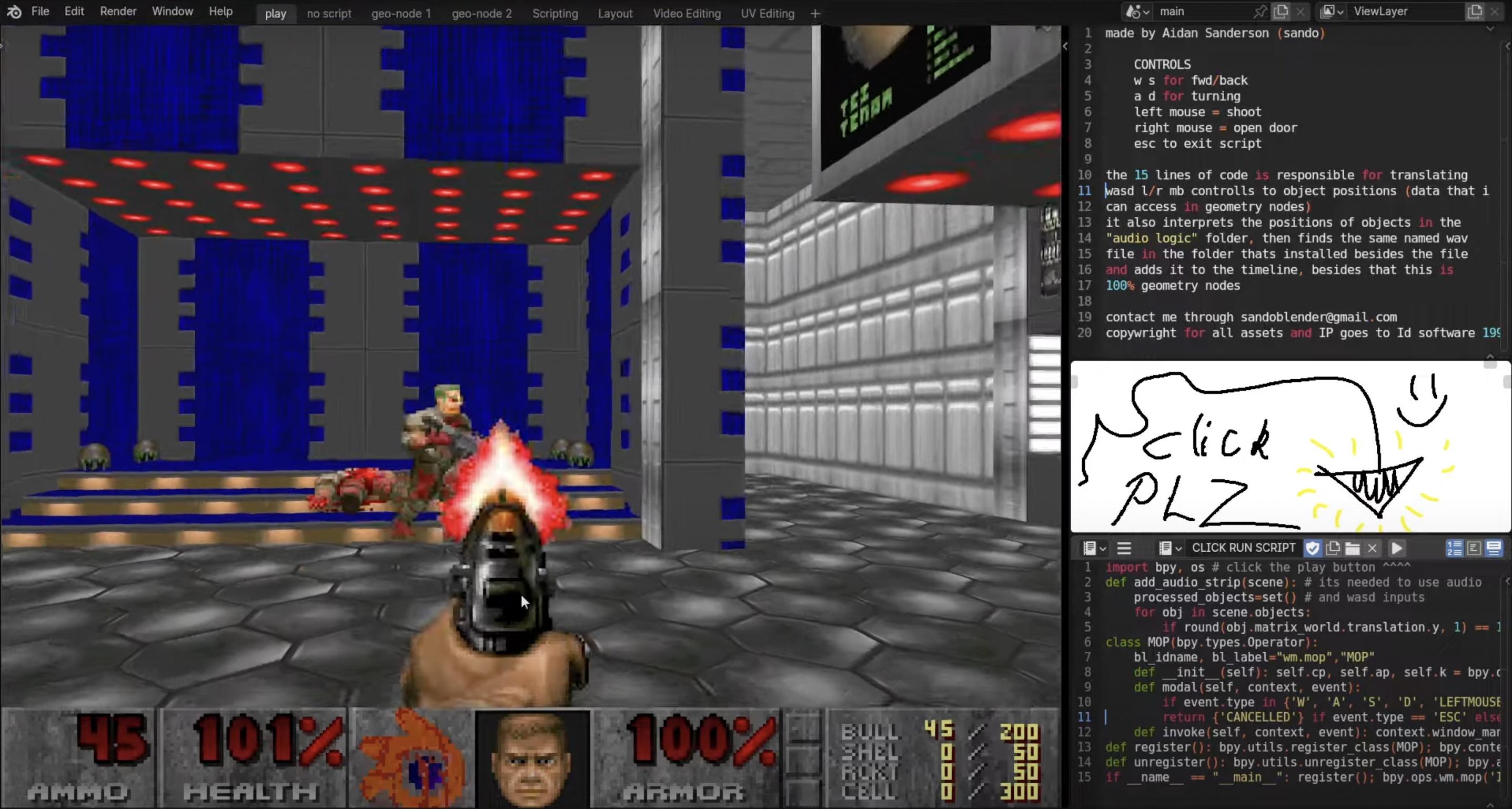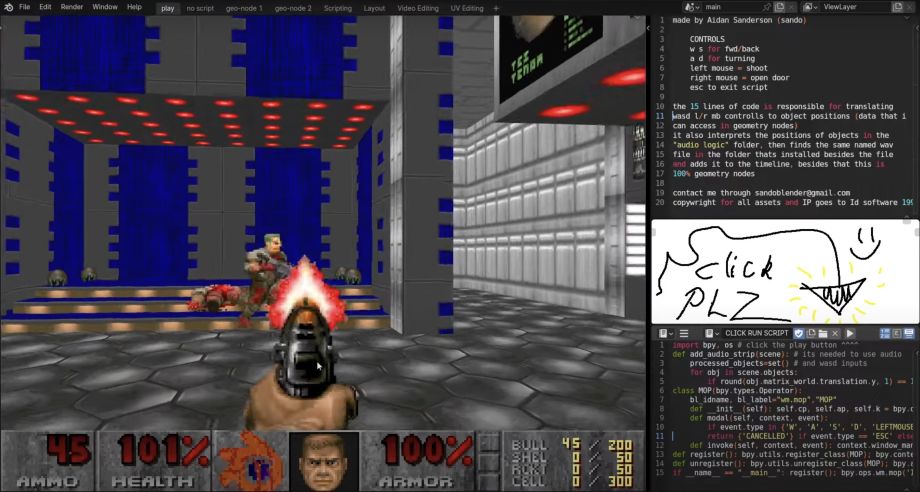Blender's Geometry Nodes Join the List of Things That Can Run DOOM

As it turns out, you don't even need a game engine to run the legendary FPS in Blender.
From Windows' Notepad to lawnmowers, from pregnancy tests to living cells – it seems that if you are motivated enough, you can play the original 1993 DOOM on just about anything, regardless of the intended use of your platform of choice.
Earlier this month, the ever-growing list of things that can run DOOM has been joined by none other than Blender's Geometry Nodes toolset, with Game Developer and CG Generalist Aidan Sanderson, a.k.a. Sando, demonstrating that despite the removal of Blender Game Engine in 2.80, the software can still be utilized for creating video games.
Running 100% on Geometry Nodes, Sando's Blender DOOM looks, feels, and plays exactly like the original game, all without a game engine. Like all great projects, GN-powered DOOM was developed with a single goal in mind – for fun. Moreover, by adding 15 lines of code, it is also possible to add WASD controls to the Blender version of the game and make it support audio files, allowing for a more pleasant experience.
Besides the showcase demo, the developer also shared a detailed breakdown explaining how exactly this feat was achieved:
And if you still don't believe that the project is running exclusively on Geometry Nodes, you can download the .blend file and try it out yourself. The file is available free of charge via Aidan Sanderson's Gumroad page.

Previously, the author also shared a two-part tutorial series, explaining how you can recreate Minecraft in Blender. We highly encourage you to visit Sando's YouTube channel to check out more of the creator's awesome projects.



